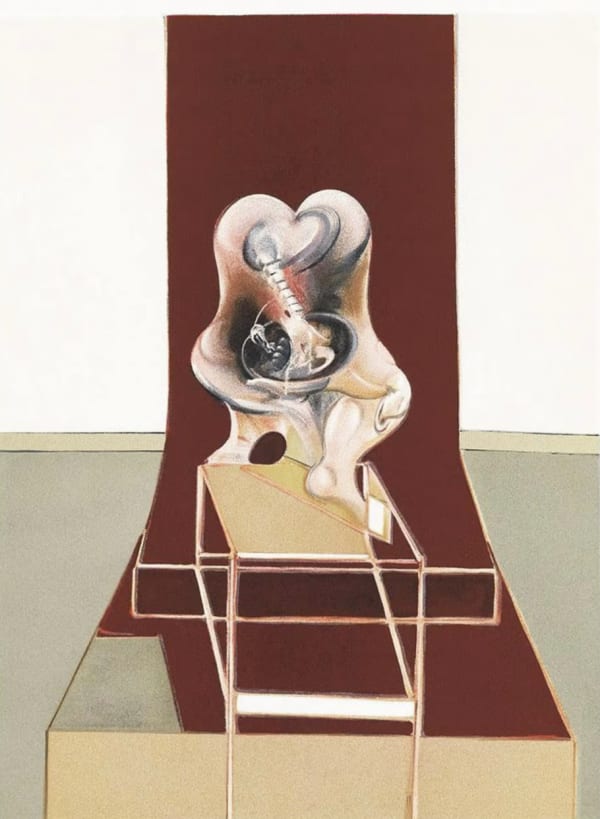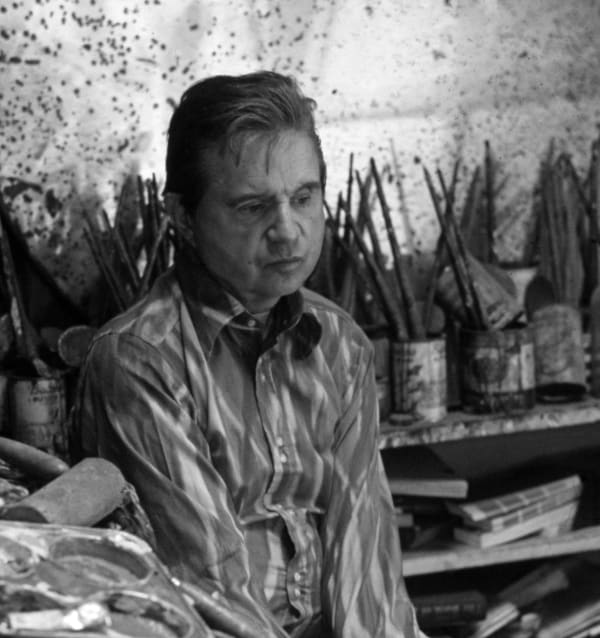George Dyer’s death in October 1971 remains one of the most tragic moments in Francis Bacon’s life. Dyer took his own life in a Paris hotel room, just hours before the opening of Bacon’s grand retrospective at the Grand Palais - an event meant to celebrate the artist’s career at its height. The contrast between public acclaim and private devastation could not have been starker.
Though Bacon maintained his composure during the exhibition, the loss haunted him for the rest of his life. He rarely spoke about it, but the grief surfaced repeatedly in his art, particularly in the Black Triptychs, where Dyer’s image reappears as both memory and apparition. His death marked the beginning of a more introspective period for Bacon, one in which mortality, guilt, and the passage of time became central to his work.
 Triptych August (centre panel), 1972Lithograph, edition size of 180, 61cm x 49 cm©The Estate of Francis Bacon
Triptych August (centre panel), 1972Lithograph, edition size of 180, 61cm x 49 cm©The Estate of Francis Bacon


